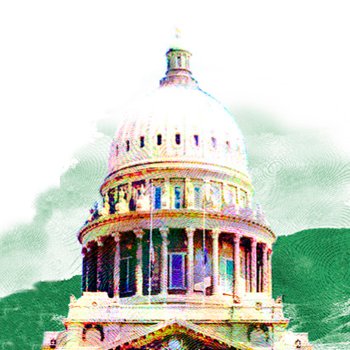Can University of Idaho students help us understand wildfire spread? Meet ‘the Dragon’
Published at | Updated at
MOSCOW (Idaho Statesman) — At the University of Idaho’s fire lab in Moscow students stood back as glowing embers were pumped out of a small machine, setting ablaze the model of a neighborhood — birdhouses perched on a replica hillside.
The students were part of the U of I engineering capstone program, which partners them with companies and labs looking to solve a problem. The problem they were assigned: studying the spread of wildfires and finding ways to reduce their damage, by simulating fires started by embers.
The researchers used a compact ember generator, known as the “Dragon 2.0,” which has a propane torch to ignite small wood chips and create embers that are blown out by a fan.
The model improves on the “Dragon 1.0,” built by students in 2021, which had problems with leaking embers and a fuel source catching on fire, said Douglas Hardman, one of the project advisers and a graduate student in earth and spatial sciences.
With the Dragon 1.0, “basically, you would stick a lighter in there, turn on the propane light, and hope you don’t lose any eyebrows,” Hardman told the Idaho Statesman.
Peter Wieber, who recently graduated from the U of I’s engineering program, worked with other engineering students to use computational modeling and find the best design for a new prototype. The Dragon 2.0 can spit out embers for 15 minutes before refueling to create an “ember storm,” an important design for studying wildfires and understanding sustained burns, Wieber told the Statesman.
“We were really happy to see that the design change worked as well as they did and make something that can characterize how these embers fly and burn buildings,” Wieber said.

While larger ember generators exist, they’re difficult to move around and require large, expensive buildings for test burns, Hardman said. With a small generator, university labs can conduct more experiments to study how fires spread.
Idaho homes ‘susceptible to fire’
Wildfires in Idaho and Eastern Oregon this summer have caused weeks of smoky air in the Treasure Valley and extensive damage. The Durkee Fire near the Idaho-Oregon border has burned nearly 300,000 acres, while the Gwen Fire in northern Idaho has destroyed 25 residences, according to the Idaho fire map. Conditions have prompted fire restrictions across the state as little rain and extreme heat continue.
The vast majority of homes damaged by fires in the U.S. started with embers, according to the Insurance Institute for Business Home and Safety, a South Carolina-based research institute.

The Dragon 2.0 could help developers build fire-resistant structures, Hardman said. Embers can catch on door and window screens or get stuck in deck grooves, and understanding exactly how this happens could inform people on how to change designs and prevent damage, he added.
“A lot of people are moving to Idaho, and where do they go? Out into the woods,” Hardman told the Statesman. “So now we have a lot of houses in the woods that are susceptible to fire.”
Generator could be used for experimental forests
Hardman hopes that, with some improvements, the generator can be tested in experimental forests, which are areas of land designated for land management research, to see how embers can cause fires in a real-world setting.
The project has gained some interest from the U of I’s Experimental Forest, a research and teaching forest, to use the generator and learn about embers during scheduled “prescribed burns,” which the university conducts to study fire behavior and teach students about management practices, Hardman said.
Prescribed burns typically refer to fires intentionally set to reduce hazardous fuels, such as dry foliage and dense vegetation. Last year the Payette National Forest near Boise, which had the most acres for a prescribed burn in Idaho, planned up to 23,000 acres for burns, according to the U.S. Forest Service.
Hardman plans to continue refining the Dragon 2.0 with help from U of I engineering students enrolled in the capstone program.
“As we make a better generator, we are increasing education, increasing research, and understanding more about fires,” Hardman said.

This weather-related story is brought to you by Frontier Credit Union. At Frontier Credit Union, we believe in building a better life for our members, our communities and the great state of Idaho. Explore our solutions and start building your better life today at Frontier Credit Union.




